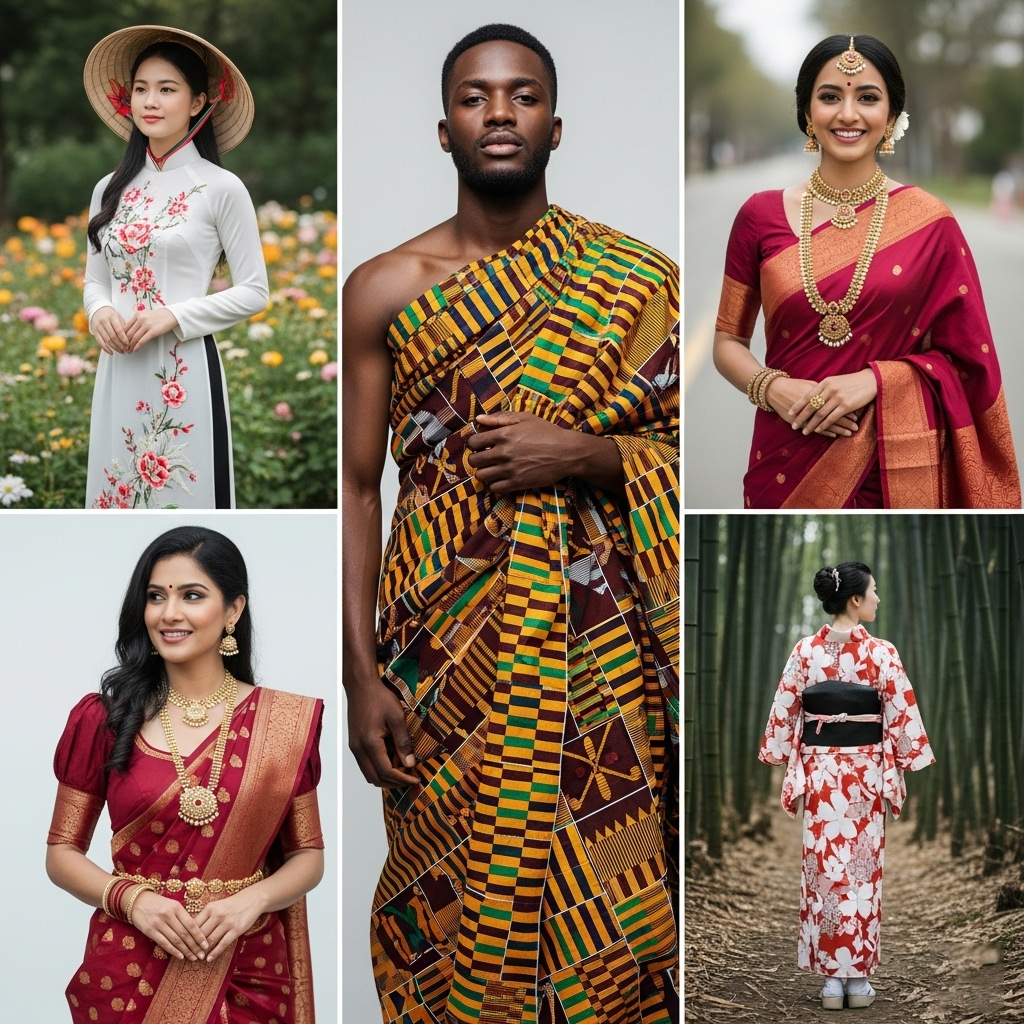Fashion is often perceived as a frivolous pursuit, a superficial interest in fleeting trends. Yet, to dismiss it as such is to overlook its profound role as a powerful form of non-verbal communication and a mirror reflecting societal values, beliefs, and aspirations. More than mere coverings for the body, clothes are deeply intertwined with cultural identity, serving as a visual language that expresses individual and collective narratives, traditions, and transformations.
Throughout history, clothing has been a primary marker of social status, profession, and religious affiliation. Think of the elaborate robes of royalty, the functional uniforms of soldiers, or the distinctive attire of religious orders – each conveyed immediate information about the wearer’s place in society. In many traditional cultures, indigenous garments are rich with symbolism, featuring specific colors, patterns, and embellishments that narrate ancestral stories, signify rites of passage, or indicate tribal belonging. These garments are not just worn; they are celebrated, passed down through generations, and serve as tangible links to heritage and community. The intricate embroidery of Vietnamese ao dai, the vibrant patterns of African kente cloth, or the layered kimonos of Japan are all prime examples of how fashion encapsulates centuries of cultural wisdom and aesthetic expression.
As societies evolve, so does fashion. The Industrial Revolution, for instance, brought about mass production, making clothing more accessible and leading to a standardization of styles. However, even within this standardization, subtle shifts in silhouettes, fabrics, and accessories continued to reflect changing social norms and technological advancements. The flapper dresses of the 1920s symbolized newfound freedom for women, challenging corseted Victorian ideals. The emergence of denim as everyday wear in the mid-20th century, initially associated with laborers, became a symbol of rebellion and youth culture, transcending class boundaries. These transformations demonstrate how fashion can be both a product of and a catalyst for social change.
Subcultures, in particular, have harnessed fashion as a powerful tool for identity formation and expression. From the rebellious leather jackets of bikers and punks to the elaborate Gothic aesthetic or the vibrant street style of hip-hop culture, clothing becomes a uniform that signals allegiance to a particular group, shared values, and a distinct worldview. These styles often deliberately challenge mainstream norms, creating a visual distinction that reinforces a sense of belonging and solidarity among members. They become statements of protest, creativity, and individuality within a larger societal framework.
Furthermore, national identity is frequently expressed through fashion. Traditional dress, even if only worn on special occasions, becomes a powerful symbol of heritage and pride. When national leaders wear traditional attire on the international stage, it’s a conscious assertion of cultural distinctiveness. Even in everyday wear, subtle influences from national aesthetics can be observed, from the tailoring preferences in Italy to the minimalist sensibilities of Scandinavian design. Fashion designers often draw inspiration from their cultural roots, infusing contemporary collections with elements of traditional craftsmanship, textile patterns, or historical silhouettes, thereby bringing their heritage to a global audience.
However, the relationship between fashion and cultural identity is not without its complexities. Globalization and the rapid dissemination of trends through social media have led to cultural appropriation concerns, where elements of traditional dress are adopted by mainstream fashion without proper understanding, respect, or acknowledgment of their origins. This raises important questions about ownership, authenticity, and the commercialization of cultural heritage. Conversely, fashion can also be a vehicle for cross-cultural exchange and appreciation, fostering dialogue and understanding when approached respectfully and collaboratively.
In essence, fashion is a dynamic canvas upon which individuals and communities paint their stories. It allows us to express our affiliations, our values, our aspirations, and even our dissent. It connects us to our past, grounds us in our present, and propels us into the future. By paying attention to what people wear and why they wear it, we gain deeper insights into the intricate tapestry of human cultures, recognizing that every stitch, every color, and every silhouette carries meaning beyond mere aesthetics. Fashion is, truly, a language spoken by all, revealing the rich and diverse identities that shape our world.


Leave a Comment
Your email address will not be published. Required fields are marked *